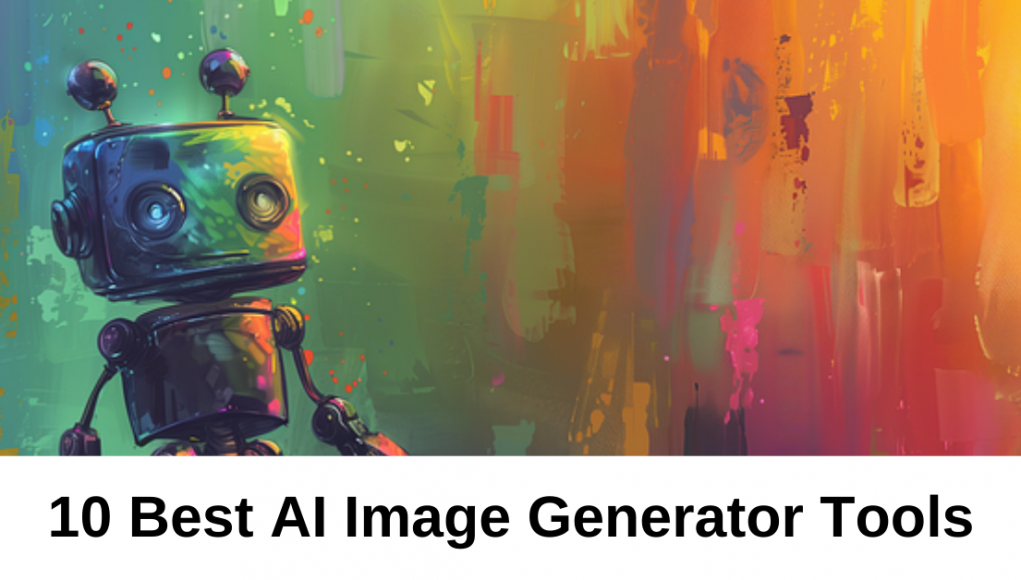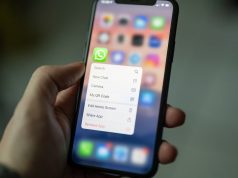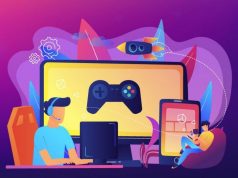In recent years, artificial intelligence (AI) has revolutionized various industries, and the creative field is no exception. AI image generators have emerged as powerful tools capable of creating, modifying, and enhancing images with impressive results. Whether you’re a professional designer, an artist, or someone interested in AI’s potential, understanding the Best AI Image Generator Tools is crucial.
In this article, we will explore some of the Best AI Image Generator Tools, their key features, and their impact on the future of art and design.
How AI Image Generators Work?
Best AI Image Generator Tools use machine learning techniques, primarily Generative Adversarial Networks (GANs) and diffusion models. GANs consist of two networks: the generator, which creates images from random noise, and the discriminator, which evaluates whether these images are real or fake. The feedback loop between these networks improves the generated images over time.
Diffusion models, on the other hand, transform random noise into coherent images through multiple steps, refining the image’s details and features at each stage. Both techniques rely on vast datasets, allowing the AI to learn various image attributes such as color, texture, and composition.
Users input prompts, which can be text descriptions or images, and the AI interprets this input to generate a new image that matches the criteria. The results can range from realistic portraits to abstract artwork, offering unparalleled creativity and customization.
Key Features to Consider in AI Image Generators?
When choosing an AI image generator, several features are essential:
Ease of Use: A user-friendly interface with intuitive controls is necessary, particularly for non-technical users.
Output Quality: High-resolution, detailed images are crucial, especially for professional use.
Customization: Tools should offer control over style, color, and composition to achieve the desired effect.
Performance: Faster tools that do not compromise on quality are ideal, especially for large-scale projects.
Cost: Some tools are free, while others require a subscription or one-time payment, so it’s important to weigh the cost against the benefits.
Top AI Image Generator Tools
In this section, we will explore some of the Best AI Image Generator Tools, ranging from the highly advanced DALL-E 2 to collaborative platforms like Artbreeder. Each tool offers distinct advantages, from ease of use to unparalleled control over image customization. The descriptions below highlight their core features, use cases, pros, and cons, providing a comprehensive overview to help you decide which tool best fits your creative needs.
1. DALL-E 2
DALL-E 2, developed by OpenAI, is widely regarded as one of the most powerful AI image generators available today. Building upon its predecessor, DALL-E, it delivers significantly improved image quality, offering intricate details and precise representations of the prompts given. This tool excels at converting textual descriptions into stunning, high-resolution visuals, making it a top choice for both professionals and hobbyists alike.
Key Features:
- Converts text prompts into highly detailed, intricate images.
- Advanced inpainting feature allows editing of specific parts of an image.
- Capable of generating high-resolution images that can be used for professional purposes.
Use Cases:
DALL-E 2 is perfect for artists, designers, and marketing professionals who need detailed, high-quality visuals for various projects, from concept art to advertising campaigns. The inpainting feature also makes it a useful tool for refining and editing images with precision.
Pros:
- Exceptional image detail and accuracy.
- User-friendly interface suitable for both beginners and experts.
- Versatile across a wide range of creative applications.
Cons:
- Limited access, often restricted to invitation or subscription.
- High computational demands can slow down the image generation process.
2. Midjourney
Midjourney stands out for its ability to produce imaginative, surreal imagery that often transcends the conventional boundaries of AI-generated art. Unlike other tools, it operates primarily through a Discord bot, allowing users to generate images by interacting with the bot via text prompts. This unconventional setup has gained Midjourney a strong community following, with users frequently sharing their unique, abstract creations.
Key Features:
- Specializes in artistic, abstract visuals with a distinctive surreal quality.
- Subscription-based service, offering different tiers depending on user needs.
- Strong community support, fostering collaboration and idea sharing.
Use Cases:
Midjourney is best suited for artists and designers who are looking to experiment with unconventional, abstract imagery. It is ideal for concept art, digital illustrations, and creating artistic visuals that push creative boundaries.
Pros:
- Produces unique and creative outputs that set it apart from other tools.
- Collaborative, community-driven platform where users can draw inspiration from others.
- Simple, command-based interface through Discord.
Cons:
- Subscription fees may be a barrier for casual users.
- Requires familiarity with Discord, which might be challenging for some users.
- Limited fine-tuning controls compared to more traditional AI image generators.
3. Stable Diffusion
Stable Diffusion is an open-source AI image generator that provides flexibility and control over the creative process. Its open-source nature means users can freely access and modify the tool, making it a popular choice among developers and tech-savvy users. Stable Diffusion allows for the creation of both realistic and artistic images, making it versatile for a wide range of applications.
Key Features:
- Fully open-source, enabling extensive customization and development.
- Offers fine-tuning options for greater control over image style and composition.
- Capable of generating both realistic and abstract artwork, depending on user preferences.
Use Cases:
Stable Diffusion is ideal for users who require more control over the creative process, such as digital artists, product designers, and developers. Its versatility makes it suitable for everything from commercial art to experimental designs.
Pros:
- Completely free to use and open-source, encouraging innovation and customization.
- High level of control over image generation, allowing for detailed adjustments.
- Large community of developers contributing to regular updates and enhancements.
Cons:
- Requires technical knowledge for optimal use and setup.
- Can be resource-intensive, necessitating powerful hardware for smooth operation.
- Results can vary widely depending on how the tool is fine-tuned.
4. Artbreeder
Artbreeder offers a unique, collaborative approach to AI image generation by allowing users to blend and remix existing images to create new, hybrid designs. This platform’s intuitive slider-based controls make it accessible to users without any technical background, enabling them to adjust various parameters like style, color, and facial features effortlessly.
Key Features:
- Facilitates blending of images to create unique designs.
- Provides a large library of user-generated content to draw inspiration from.
- Simple, slider-based interface for customizing attributes such as style and composition.
Use Cases:
Artbreeder is an excellent choice for artists and designers who want to experiment with blending different styles or create new visual concepts. It’s particularly useful for generating avatars, portraits, and experimental art.
Pros:
- User-friendly interface with intuitive controls.
- Community-driven content, encouraging creativity and collaboration.
- Excellent for quickly generating unique, experimental designs.
Cons:
- Limited to blending and remixing images rather than generating entirely new ones.
- The free version has fewer features, with advanced options requiring a paid subscription.
- Image quality can vary depending on the source material.
5. Runway ML
Runway ML is a highly versatile AI tool designed for professional creatives, offering an extensive range of AI-driven features beyond image generation. From video processing to creating custom AI models, Runway ML is a comprehensive platform aimed at those in the creative industry looking for advanced solutions.
Key Features:
- A wide array of AI models for both image and video creation.
- Seamless integration with other creative tools like Adobe Premiere and After Effects.
- Regularly updated with new features and models, keeping the platform cutting-edge.
Use Cases:
Ideal for professionals working in the creative industry, Runway ML is commonly used for tasks such as video editing, visual effects creation, and advanced digital art. Its flexibility makes it a powerful tool for content creators, filmmakers, and designers.
Pros:
- Supports both image and video generation, offering versatility.
- Professional-grade features, including integration with popular software.
- Regular updates ensure access to the latest AI tools and models.
Cons:
- Can be costly, especially for premium features.
- A steep learning curve for beginners, as it offers more advanced options than other tools.
- Requires a powerful computer for smooth operation of high-demand features.
6. DeepArt
DeepArt focuses on transforming photos into stunning pieces of art by applying the style of famous paintings or unique artistic patterns. Its strength lies in taking simple images and converting them into visual representations inspired by iconic art styles. With its focus on style transfer, DeepArt excels in creating painterly images from everyday photos, offering a tool that is both simple and effective for non-technical users.
Key Features:
- Utilizes deep neural networks to apply artistic styles to images.
- Provides a wide variety of styles, including famous artistic movements and unique options.
- Generates high-resolution outputs suitable for print or online display.
Use Cases:
DeepArt is popular among photographers, artists, and hobbyists who want to give their photos a fresh, artistic flair. It’s especially useful for creating digital artwork that mimics the techniques of painters like Van Gogh or Picasso.
Pros:
- User-friendly interface with no need for technical expertise.
- High-quality output with a large selection of artistic styles.
- Fast processing time for most images, allowing for quick experimentation.
Cons:
- Customization is limited to choosing from predefined styles, with no granular control.
- Some artistic styles work better with certain images, so results may vary.
- Free version includes watermarks, and full features require a subscription.
7. Deep Dream Generator
Originally developed by Google, Deep Dream Generator is a fascinating AI tool that produces dream-like, often surreal images by using layers of neural networks. The images produced are highly imaginative and abstract, offering a psychedelic quality that has become a trademark of Deep Dream visuals. This tool allows users to transform ordinary photos into unique works of art, making it popular for both entertainment and experimental projects.
Key Features:
- Generates abstract, dream-like visuals by applying neural network layers to images.
- Provides various preset styles, with the ability to adjust the level of abstraction.
- Simple interface with several customization options for more creative control.
Use Cases:
Perfect for users looking to create highly creative, abstract art, Deep Dream Generator is widely used in entertainment, digital art, and conceptual projects. The surreal nature of the images makes it a unique tool for artists and designers experimenting with AI-generated aesthetics.
Pros:
- Produces truly unique and imaginative visuals.
- Easy-to-use interface with a variety of preset styles for quick results.
- Suitable for creating abstract or experimental artwork.
Cons:
- The output can sometimes be unpredictable, with inconsistent results depending on the input image.
- Limited control over the fine details of the image beyond the initial style settings.
- Requires a paid account for high-resolution image saving.
8. NightCafe Creator
NightCafe Creator is another AI image generator tool that provides users with a range of artistic styles to transform text prompts or images into visual artwork. It’s designed to be accessible to both beginners and more experienced users, offering an intuitive interface that generates artwork quickly. NightCafe is known for its diverse style options, enabling users to create anything from realistic images to abstract art with minimal effort.
Key Features:e
- Text-to-image generation with various artistic styles.
- Easy-to-use interface that allows both novices and professionals to generate images quickly.
- Free tier available with limited features, offering a range of style options for basic use.
Use Cases:
NightCafe is great for users looking to create social media content, quick artistic visuals for blogs or marketing, and personal art projects. Its simplicity and speed make it perfect for generating images for immediate use, especially for those without design experience.
Pros:
- User-friendly and accessible to all levels of experience.
- Fast generation of images across multiple styles.
- Free tier offers basic functionality with decent output quality.
Cons:
- Paid version required for high-resolution outputs and additional features.
- Customization options are limited compared to more advanced tools.
- Generated images sometimes do not perfectly match the input prompt.
9. Canva’s AI Image Generator
Integrated into one of the most popular design platforms, Canva’s AI Image Generator allows users to create custom images from text prompts. Canva’s AI tool simplifies the creative process, particularly for beginners, by offering a seamless experience alongside Canva’s suite of design features. This tool is aimed at both professionals and hobbyists, allowing them to create visuals that can be used in a variety of settings, from social media to presentations.
Key Features:
- Integrated into Canva, making it easy to use within the broader design ecosystem.
- Text-to-image generation combined with access to Canva’s extensive design elements and templates.
- Simple to operate, with drag-and-drop functionality for enhanced creative output.
Use Cases:
Canva’s AI Image Generator is widely used for social media marketing, blogging, and quick content creation. It’s a go-to for non-designers who need high-quality visuals to complement presentations, web pages, or marketing collateral.
Pros:
- Easy integration with Canva’s design tools and templates.
- Quick generation of images tailored for content creators and marketers.
- Free version offers a decent set of features for casual users.
Cons:
- The AI-generated images may sometimes look generic or lack detail.
- Limited customization beyond the initial prompt.
- Access to advanced features and high-res images requires a subscription.
10. Jasper Art
Jasper Art is an AI image generator specifically designed with marketers and content creators in mind. It enables users to generate custom visuals that align with brand aesthetics and messaging, making it an invaluable tool for professionals in need of quick, brand-aligned content for marketing, blogs, and social media. Jasper Art offers customization features that help ensure consistency with a brand’s visual identity.
Key Features:
- Tailored for content creation, focusing on brand-aligned visual outputs.
- Customizable image generation for ads, social media, and blog content.
- Subscription model with various tiers based on user needs.
Use Cases:
Jasper Art is best suited for marketers, businesses, and content creators who need to generate a large volume of visuals quickly while maintaining consistency with their brand. Its ability to produce custom visuals aligned with specific marketing goals makes it an essential tool for businesses.
Pros:
- Designed for business needs, offering quick and efficient generation of brand-consistent visuals.
- Simple to use, even for those without design experience.
- Excellent for producing marketing materials and social media content in bulk.
Cons:
- Subscription-based model, with costs that may be prohibitive for smaller businesses or casual users.
- Limited artistic depth, as the tool is mainly focused on business applications.
- Less control over fine artistic details compared to tools designed for creative professionals.
The Future of AI in Art and Design
The potential of AI in art and design is immense. As AI technology continues to evolve, image generators are likely to become even more integrated into creative processes. Artists may collaborate with AI tools in real time, blending their vision with AI’s computational power to produce groundbreaking work.
We can expect improvements in the quality, diversity, and realism of Best AI Image Generator Tools, pushing the boundaries of what these tools can achieve. However, the rise of AI also raises ethical questions. As AI-generated art becomes more common, concerns about authorship, originality, and the role of the human artist will continue to grow. The debate over whether AI-generated art is “real” art is ongoing, and as these tools advance, it will challenge our traditional understanding of creativity and art.
Also Read: The Power of Video Content in Marketing
Conclusion
AI image generators are reshaping the world of art and design, offering innovative tools that empower creators across various fields. From the hyper-realistic images generated by DALL-E 2 to the dreamlike visuals produced by Deep Dream Generator, these tools are expanding creative horizons and allowing for experimentation in ways previously unimaginable.
As AI technology continues to advance, we can expect these tools to become even more sophisticated and widely accessible. Whether you’re a professional artist, designer, or simply curious about the possibilities of AI, exploring these tools opens up a world of potential. The future is full of creative possibilities, and the Best AI Image Generator Tools are poised to play a significant role in shaping the next generation of art and design.





